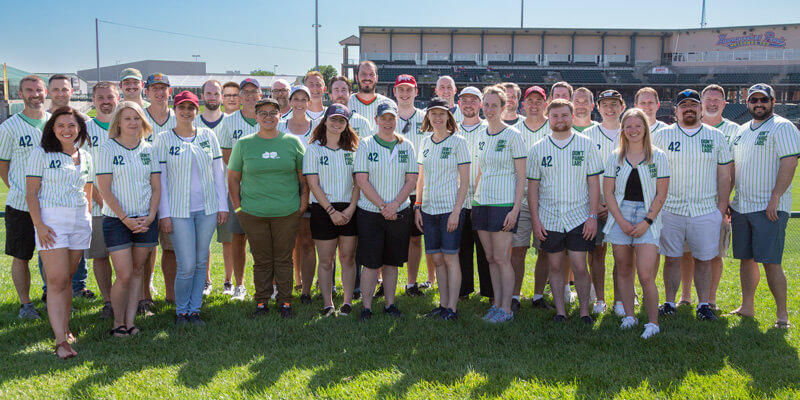Blog
The Latest from Our Team

Don’t Panic Labs Named One of Lincoln’s “Best Places to Work” for 2022
Software product and design company Don’t Panic Labs was recognized as one of Lincoln’s Best Places to Work at a ceremony at Haymarket Park on Thursday, June 16th. The company was recognized as #1 in the Medium-Sized Company category by Woods & Aitken LLP, the Lincoln Journal Star, and the Lincoln Human Resource Management Association….
Read more…

Top to (More) Bottom with Angular and .NET Core
Our previous activities got us an Angular application making an HTTP call to a .NET Core backend to retrieve a shopping list. In this activity, we will extend our .NET backend to use SQL Server. First, let’s create a Shopping database. Next, we need to create a ShoppingListItems table. Now that we have a database…
Read more…

Using Prettier with Git Hooks for Formatting Consistency
When working on a front-end project, it can be hard to keep consistency with your file’s formatting (spacing, indentation, quotation style, etc.). Prettier works with your code to ensure consistency and allows your team to set shared standards. Prettier works great, but it only works by default when you set it up within your IDE…
Read more…

Azure Application Gateway
Azure’s Application Gateway service is a load balancer. It allows for the distribution of traffic across multiple servers. This isn’t a tool we often use at Don’t Panic Labs; we tend to use more of Azure’s Platform as a Service (PaaS) tools. However, Application Gateway is still a handy tool to have in your toolbox….
Read more…

A Little More API Keys and API Gateway
In my previous blog post, we dove into API Keys and AWS’s API Gateway. What we covered was pretty straightforward: we globally applied an API key and usage plan to an API. But we don’t have to do that. We can apply an API Key to an individual resource, not all the resources. Why would…
Read more…

API Keys and API Gateway
API Gateway is an Amazon product that sits in front of APIs we create (which are probably hosted in AWS Lambda). Sometimes we want to limit who can access certain APIs. There are a variety of ways we can accomplish this. The first and most obvious is with API keys. API keys require that requests…
Read more…

Top to Bottom with Angular and .NET Core
Building modern software often involves a Single Page Application (SPA) calling to a backend service. This is pretty straightforward, but there are more steps than you would expect. In this blog post, we will walk through creating an Angular application that calls a .NET Core backend. Step 1 – Create a very simple HTML web…
Read more…

Don’t Panic Labs Announces Latest Towel Drive for People’s City Mission
Local software design and engineering company Don’t Panic Labs is excited to announce the return of its annual towel drive for People’s City Mission. From May 16th to May 27th, Don’t Panic Labs is encouraging all of Lincoln to donate towels in any condition for use at the Mission’s shelter in Lincoln. Towels are always…
Read more…

Logging and AWS Beanstalk
After creating an ASP.NET Beanstalk application, you might be wondering, “Where are my logs?” Without configuring CloudWatch, my logs do show within the Beanstalk UI. Note: The below image assumes no CloudWatch. After clicking Logs, you need to click Request Logs and then select how much you want to see. I usually select Last 100…
Read more…

Quick Thoughts on Google’s Media CDN
Years ago, I worked at a CDN company, so I am always interested in what is going on in the content delivery space. Where is the industry headed? Last week, a major shake-up in the space occurred. Google is now enabling people to deliver videos with the same platform Google uses for YouTube. With more…
Read more…